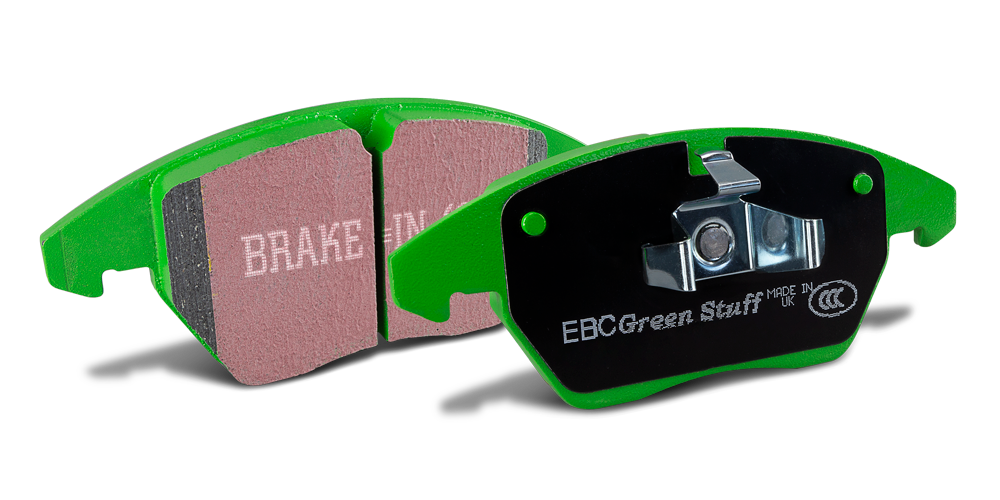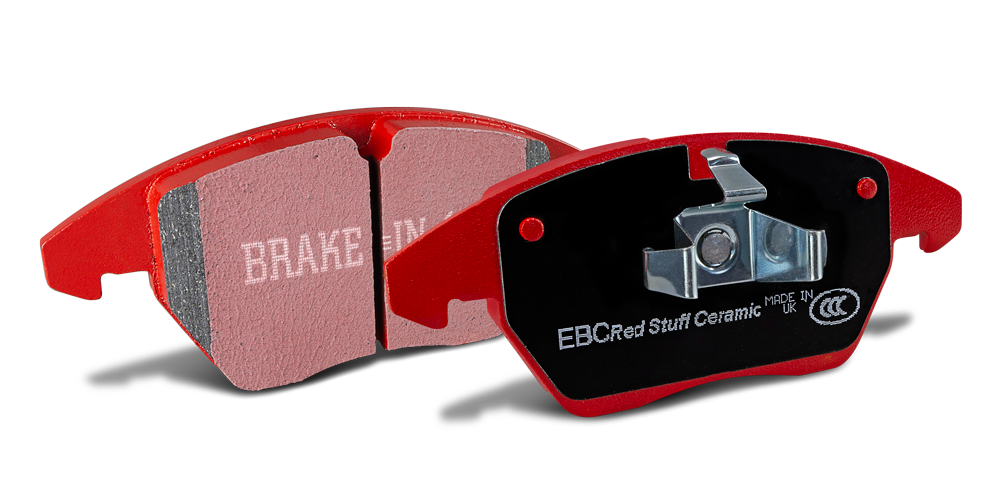How to Choose the Right Brake Pads for Your Car
Brake pads are a critical component of your car's braking system, ensuring safe and reliable operation. With a wide range of options available, it can be overwhelming to choose the right brake pads for your vehicle. This article will guide you through the different types of brake pads, including organic, semi-metallic, and ceramic, helping you make an informed decision to optimize your car's braking performance.
Key Takeaways:
- Choosing the right brake pads is crucial for the safety and performance of your vehicle's braking system.
- Types of brake pads include organic, semi-metallic, and ceramic.
- Organic brake pads offer good braking performance but wear out quickly and produce more dust.
- Semi-metallic brake pads provide excellent braking power but may be noisier and cause more rotor wear.
- Ceramic brake pads offer excellent stopping power, low dust, and quiet operation but may have less initial bite.
Understanding Organic Brake Pads
Organic brake pads, also known as non-asbestos organic (NAO) brake pads like EBC Greenstuff, are a popular option for many vehicles. These brake pads are made from a mixture of organic components, including carbon, kevlar, glass, and rubber, which are bound together with a high-temperature resin. They offer good braking performance with a strong initial bite and operate quietly.
One advantage of organic brake pads is their ability to provide effective braking performance. They offer reliable stopping power and can handle everyday driving situations. Additionally, organic brake pads are known for their low noise levels, making them a popular choice for drivers looking for a quiet braking experience.
However, it's important to note that organic brake pads do have some drawbacks. One downside is that they tend to produce more dust compared to other brake pad options. This dust can accumulate on your wheels and require frequent cleaning. Additionally, organic brake pads tend to wear out more quickly than other types, meaning they may need to be replaced more often.
Overall, organic brake pads are a suitable choice for drivers seeking good braking performance and quiet operation. However, it's important to consider the trade-offs of increased dust production and shorter lifespan when making a decision.
Table: Comparison of Brake Pad Types
| Brake Pad Type | Advantages | Disadvantages |
|---|---|---|
| Organic Brake Pads | Good braking performance, quiet operation | Produce more dust, wear out quickly |
| Semi-Metallic Brake Pads | Excellent braking power, superior heat dispersion | Noisier, produces more dust, causes more wear on brake rotors |
| Ceramic Brake Pads | Excellent stopping power, low dust, rotor-friendly, quiet operation | Less bite, less effective in extreme temperatures |
It's essential to consider your driving needs and conditions when choosing the right brake pad for your vehicle. Factors such as braking performance, noise level, and dust production should be taken into account. Consulting with a professional or referring to your vehicle manufacturer's recommendations can also help you make an informed decision.
Exploring Semi-Metallic Brake Pads

Semi-metallic brake pads like select Brembo brake pads are a popular choice for vehicles due to their superior braking power and heat dispersion capabilities. These pads are made with a combination of metals such as copper, iron, steel, and graphite, mixed with a high-temperature resin. The inclusion of these metal components enhances the overall performance of the brake pads.
Braking Power and Heat Dispersion
One of the key advantages of semi-metallic brake pads is their exceptional braking power. This makes them especially effective in heavy braking situations, such as when you need to make sudden stops. The metal components provide increased friction, allowing for a quicker and more efficient response when you press the brake pedal.
Additionally, semi-metallic brake pads have excellent heat dispersion capabilities. This is crucial because when you apply the brakes, friction is generated, which generates heat. The metal components in semi-metallic pads help dissipate this heat more effectively, preventing brake fade and ensuring consistent braking performance.
Brake Rotor Wear, Dust, and Noise
While semi-metallic brake pads offer excellent performance, they do come with a few drawbacks. One of these is the potential for increased brake rotor wear. Due to the metal composition, these pads can be more abrasive on the brake rotors, leading to faster wear over time.
Additionally, semi-metallic brake pads tend to produce more dust compared to other types of pads. While the dust is not harmful, it can accumulate on the wheels and give them a darker appearance. Regular cleaning is recommended to maintain the aesthetic appeal.
Another consideration is the noise level. Semi-metallic brake pads are generally noisier compared to organic or ceramic pads. The metal components can create a squealing or screeching sound, especially when the brakes are applied lightly. However, advancements in pad design have reduced noise levels in newer semi-metallic brake pad options.
| Advantages | Disadvantages |
|---|---|
|
|
Despite the drawbacks, semi-metallic brake pads remain a popular choice for many drivers, especially those who prioritize braking power and performance. However, it's important to consider your specific driving needs and preferences before making a decision. Consulting with a professional can also provide valuable insights and recommendations based on your vehicle's make and model.
The Advantages of Ceramic Brake Pads
Ceramic brake pads like EBC Redstuff are highly regarded for their numerous benefits and are a popular choice among car owners. Made from a ceramic material with embedded copper fibers, these brake pads offer exceptional stopping power and heat dispersion capabilities. Their unique composition allows for reduced dust production, making them a cleaner option compared to other types of brake pads.
One of the standout advantages of ceramic brake pads is their compatibility with brake rotors. These pads are rotor-friendly, meaning they cause less wear and tear on the rotors, resulting in increased longevity and cost-effective maintenance. Additionally, ceramic pads offer a quiet and smooth operation, minimizing noise and providing a comfortable driving experience.
While ceramic brake pads offer many benefits, it's important to consider that they may have slightly less initial bite than other types of brake pads. This means that they may require a slightly longer stopping distance compared to, for example, semi-metallic brake pads. Additionally, ceramic pads can be affected by extreme temperatures, potentially reducing their effectiveness in situations where high heat is generated.
The Advantages of Ceramic Brake Pads
| Advantages | Description |
|---|---|
| Stopping Power | Ceramic brake pads provide excellent stopping power, ensuring efficient and reliable braking performance. |
| Heat Dispersion | These pads have superior heat dispersion capabilities, reducing the risk of brake fade and maintaining optimal performance during intense braking. |
| Low Dust | Ceramic brake pads produce minimal dust, keeping your wheels cleaner and reducing the need for frequent cleaning. |
| Brake Rotor-Friendly | Due to their composition, ceramic pads cause less wear and tear on brake rotors, resulting in extended rotor life. |
| Quiet Operation | These pads offer a quiet and smooth operation, ensuring a comfortable driving experience with minimal noise. |
Overall, ceramic brake pads are an excellent choice for those seeking high-performance braking with minimal dust and noise. Their unique composition and advantages make them suitable for a variety of driving conditions, providing a reliable and efficient braking solution for your vehicle.
Factors to Consider when Choosing Brake Pads
When it comes to choosing the right brake pads for your car, there are several factors that you should take into consideration. These factors will help you make an informed decision and ensure that you select the most suitable option for your needs. Let's explore the key factors that should be on your radar:
Brake Pad Material
The material composition of brake pads plays a crucial role in their performance and longevity. Different materials offer varying benefits and drawbacks. Organic brake pads, for example, provide good braking performance but may wear out quickly. Semi-metallic brake pads offer excellent braking power but may produce more noise and dust. Ceramic brake pads, on the other hand, are known for their low dust output and rotor-friendly nature. Consider the pros and cons of each material to determine which one aligns best with your preferences.
Longevity and Cost
The lifespan of brake pads can vary depending on the material and your driving habits. Consider the estimated longevity of different brake pads and weigh it against their cost. While ceramic brake pads may have a higher upfront cost, their durability can offset the expense over time. Organic brake pads, on the other hand, may have a lower cost but may need more frequent replacements. Evaluate the long-term cost and longevity to make an economical choice.
Noise Level, Braking Performance, and Driving Conditions
The noise level produced by brake pads can vary depending on the material and design. If noise is a concern for you, look for brake pads that offer quiet operation. Additionally, consider the braking performance of different pads. Some materials may provide a stronger initial bite, while others excel in heavy braking situations. Lastly, take into account your driving conditions. If you frequently drive in high-temperature environments or encounter heavy traffic, you may need brake pads that can withstand such conditions.
| Factors | Consideration |
|---|---|
| Brake Pad Material | Organic, Semi-metallic, Ceramic |
| Longevity and Cost | Compare lifespan and cost |
| Noise Level | Consider quiet operation |
| Braking Performance | Assess initial bite and heavy braking capabilities |
| Driving Conditions | Take into account temperature and traffic conditions |
Which Brake Pad is Right for Your Car?
When it comes to selecting the right brake pads for your car, several factors should be taken into consideration. Your driving style, the type of vehicle you have, and the recommendations from the manufacturer all play a role in determining the best brake pad for your needs.
For high-performance vehicles or those used for aggressive driving, semi-metallic brake pads are often the preferred choice. These pads offer excellent braking power, especially in heavy braking situations. They also have superior heat dispersion capabilities, which is important for preventing brake fade in demanding driving conditions.
If you primarily use your car for urban commuting or everyday driving, ceramic brake pads are a great option. These pads provide quiet operation and have a long lifespan. They also produce minimal dust, keeping your wheels cleaner for longer periods of time.
For lighter vehicles and those on a budget, organic brake pads can be a cost-effective choice. While they may not offer the same level of braking performance as semi-metallic or ceramic pads, they still provide good stopping power under normal driving conditions.
Considerations for Brake Pad Selection:
- Driving Style: Determine whether you have a high-performance vehicle, engage in aggressive driving, or drive primarily in urban areas.
- Vehicle Type: Consider the weight and size of your car, as well as any specific recommendations from the manufacturer.
- Budget: Evaluate the cost of different brake pad options and their long-term value.
- Braking Performance: Assess how important strong braking power is for your driving needs.
| Brake Pad Type | Advantages | Disadvantages |
|---|---|---|
| Semi-Metallic | Excellent braking power, superior heat dispersion | Noisier, more dust, increased brake rotor wear |
| Ceramic | Quiet operation, long lifespan, low dust | Less bite in extreme temperatures |
| Organic | Cost-effective, suitable for lighter vehicles | Wear out quicker, produce more dust |
Conclusion
Choosing the right brake pads is crucial for the safety and performance of your vehicle's braking system. By understanding the different types of brake pads available, and considering factors such as driving style and vehicle recommendations, you can make an informed decision that ensures optimal brake pad choice and braking system safety.
Whether you opt for organic brake pads, which offer good braking performance but may wear out quickly and produce more dust, or semi-metallic brake pads, which provide excellent braking power but may be noisier and cause more rotor wear, or ceramic brake pads, which offer efficient heat dispersion and low dust with quiet operation but may have less bite in extreme temperatures, weighing the pros and cons is essential in making the right choice.
Prioritizing safety should always be your top concern when selecting brake pads. Take into account your specific driving conditions, such as high-performance driving or urban commuting, as well as the recommendations from your vehicle manufacturer. You can also consult with a professional if you need assistance in determining the optimal brake pad choice for your car.
FAQ
How do I choose the right brake pads for my car?
Consider factors such as material composition, longevity, cost, noise level, braking performance, and driving conditions.
What are organic brake pads made of?
Organic brake pads, also known as non-asbestos organic (NAO) brake pads, are made of a mixture of organic components such as carbon, kevlar, glass, and rubber, bound together with a high-temperature resin.
What are the advantages of semi-metallic brake pads?
Semi-metallic brake pads provide excellent braking power, especially in heavy braking situations, and have superior heat dispersion capabilities. However, they can be noisier, produce more dust, and cause more wear on brake rotors compared to organic or ceramic pads.
What are ceramic brake pads made of?
Ceramic brake pads are made from a ceramic material, with embedded copper fibers for increased friction and heat conductivity.
What factors should I consider when choosing brake pads?
Factors to consider include the material composition, longevity of the pads, cost, noise level, braking performance, and driving conditions.
Which brake pad is right for my car?
The choice of brake pads depends on factors such as your driving style, vehicle type, and specific recommendations from the manufacturer.




